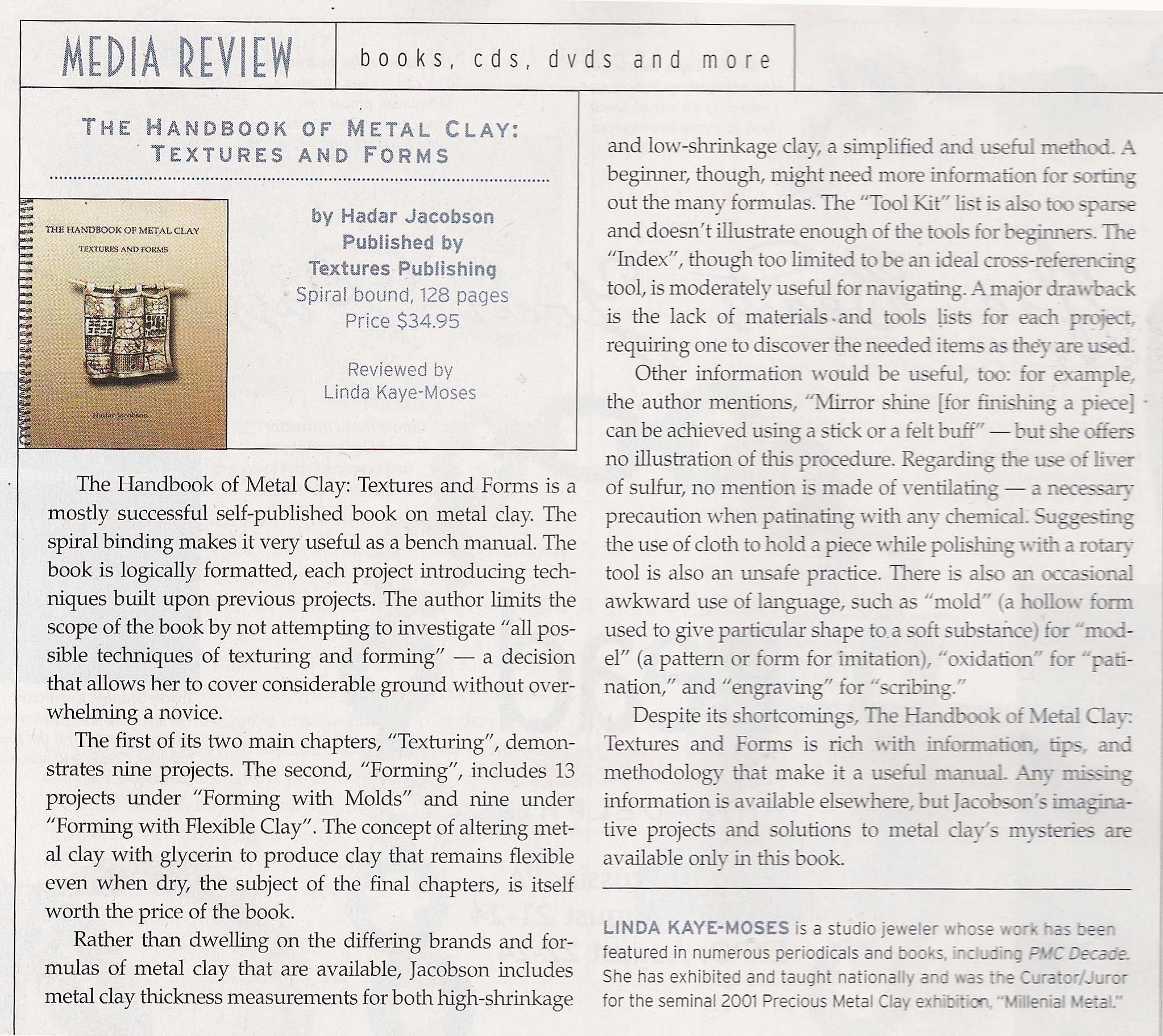
Textures and Forms
by Hadar Jacobson
Published by
Textures Publishing
The Handbook of Metal Clay:
Textures and Forms
by Hadar Jacobson
Published by
Textures Publishing
Spiral bound, 128 pages
Price: $34.95
Reviewed by:
Linda Kaye-Moses
The Handbook of Metal Clay: Textures and Forms is a mostly
successful self-published book on metal clay. The spiral binding makes
it very useful as a bench manual. The book is logically formatted, each
project introducing techniques built upon previous projects. The author
limits the scope of the book by not attempting to investigate “all
possible techniques of texturing and forming” – a decision that allows
her to cover considerable ground without overwhelming a novice.
The first of its two main chapters, “Texturing”, demonstrates nine
projects. The second, “Forming”, includes 13 projects under “Forming
with Molds” and nine under “Forming with Flexible Clay”. The concept of
altering metal clay with glycerin to produce clay that remains flexible
even when dry, the subject of the final chapters, is itself worth the
price of the book.
Rather than dwelling on the differing brands and formulas of metal clay
that are available, Jacobson includes metal clay thickness measurements
for both high-shrinkage and low-shrinkage clay, a simplified and useful
method. A beginner, though, might need more information for sorting out
the many formulas. The “Took Kit” list is also too sparse and doesn’t
illustrate enough of the tools for beginners. The “Index”, though too
limited to be an ideal cross-referencing tool, is moderately useful for
navigating. A major drawback is the lack of materials and tools lists
for each project, requiring one to discover the needed items as they
are used.
Other information would be useful, too: for example, the author
mentions, “Mirror shine [for finishing a piece] can be achieved using a
stick or a felt buff” – but she offers no illustration of this
procedure. Regarding the use of liver of sulfur, no mention is made of
ventilating – a necessary precaution when patinating with any chemical.
Suggesting the use of cloth to hold a piece while polishing with a
rotary tool is also an unsafe practice. There is also an occasional
awkward use of language, such as “mold” (a hollow form used to give
particular shape to a soft substance) for “model” (a pattern or form
for imitation), “oxidation” for “patination,” and “engraving” for
“scribing.”
Despite its shortcomings, The Handbook of Metal Clay: Textures and
Forms is rich with information, tips, and methodology that make it a
useful manual. Any missing information is available elsewhere, but
Jacobson’s imaginative projects and solutions to metal clay’s mysteries
are available only in this book.